Discover the captivating brushstrokes and visionary perspectives of the Top 10 Landscape Artists in Modern and Contemporary Art. These visionary creators transport us to ethereal realms, capturing the essence of nature’s beauty with every brushstroke.
From vibrant cityscapes to serene countryside vistas, their works are a testament to the boundless imagination and skill. It defines the world of landscape art.
Here are ten landscape artists who have made significant contributions to the genre:
1. Richard Diebenkorn

Richard Diebenkorn, Cityscape #1, 1963, Oil on canvas,
In the early NUM0s, a post-war American artist most widely associated with the Bay Area movement of San Francisco ruffled the feathers of the dominant abstract expressionist generation by returning to figurative painting. Diebenkorn had spent time on the East Coast where he primarily explored abstraction in his work. However, as he returned West and stripped away from his practice what he derided as a highly rule based and programmatic approach to abstraction. He returned to California’s landscape topography as his principal subject.
2. David Hockney
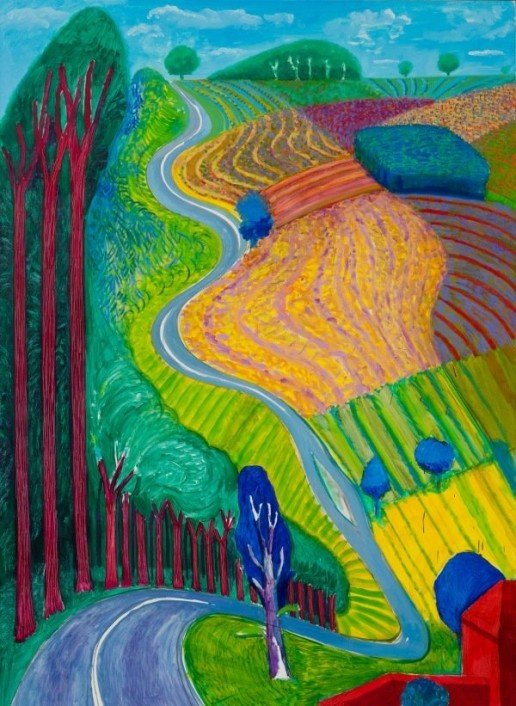
David Hockney, Going Up Garrowby Hill, 2000, Oil on canvas,
In the late NUM0s and early NUM1s, Hockney began his artistic career at The Royal College of Art. His working life has closely linked him with the pop art movements and painterly expressionism.
He has experimented widely with various methodologies. Mostly for making landscape works, including watercolours, photo collages, monumental compositions consisting of multiple smaller canvases made outdoors and then assembled inside. Also included works made with the assistance of software and iPads. Inextricably associated with the sunshine of Southern California, Hockney has also made landscape works of The Grand Canyon, the South of France. In recent years extensively of the countryside in Yorkshire, the county from which he originated in Northern England.
3. Vija Celmins
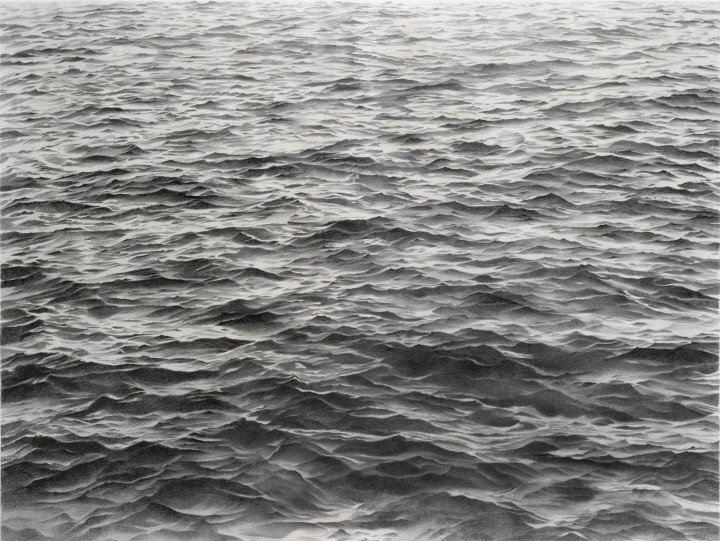
Untitled (Big Sea #1), 1969. Graphite on acrylic ground on paper by Celmins, Courtesy the artist and Matthew Marks
By the end of the 1960s, when she first developed her all-over compositions of waves, rocks, and celestial bodies, she had set aside paint in favour of graphite and charcoal. Using photographs as a source material, she uses a muted grey photorealistic technique, focusing on the object quality of the finished work, as opposed to the subject matter of it.
A modestly scaled object holds us captive. It makes us comprehend the implied infinite extension of the landscape through the image’s cropped appearance.
Distilling vast, expansive distances into mesmerizing, small-scale artworks. These “redescriptions” are a way to understand human consciousness in relation to lived experience.
4. Peter Doig
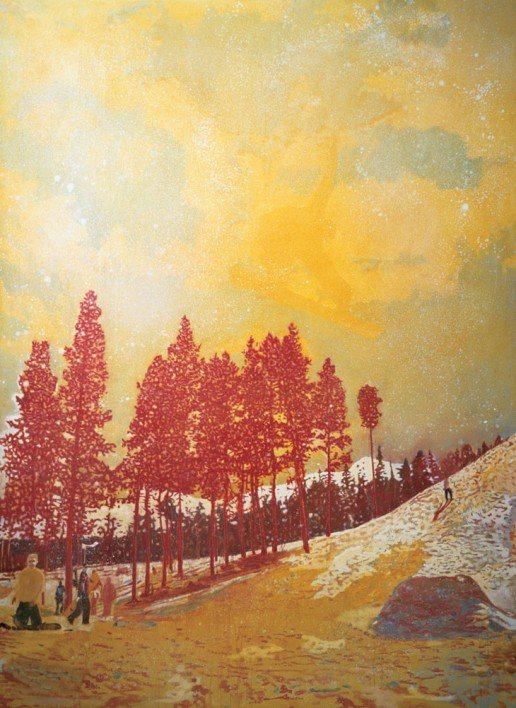
Peter Doig, Orange Sunshine, 1995
He is a Scottish born artist, who as a child moved first to the Caribbean and then to Canada, where he grew up. He draws inspiration for his figurative work from various photographic sources. For example, newspaper clippings, movie scenes, record album covers and the work of earlier artists like Edvard Munch. Their works can be described as attempts to convey a profound psychological state. His landscapes are layered formally and conceptually. They draw on assorted art historical artists, including Caspar David Friedrich, Claude Monet and Gustav Klimt.
5. Wayne Thiebaud

Wayne Thiebaud, Green River Lands, 1998
Often understood as a West Coast pop artist, Thiebaud has become synonymous with his deceptively simple and colourful still life studies of objects from the 1960s. That included especially the food, objects and table arrangements of archetypal American diner life. Thiebaud began producing landscapes in the 1960s. It was employing his characteristic exaggerated candy-coloured palette and fastidious painterly technique while experimenting with vertiginous perspective to capture his Californian surroundings. Landscape presented Thiebaud with an opportunity to explore formal questions, not necessarily the specifics of the places he depicted. “The attempt is to express as effectively as I can a sense of equilibrium and disequilibrium, so that they are somewhat discomforting. Painting is a dead flat object and when you’re trying to get some tension, majesty, or ominousness, something has to happen within that structure, to entice people to it with their bodies physically, to experience it.”
6. Etel Adnan
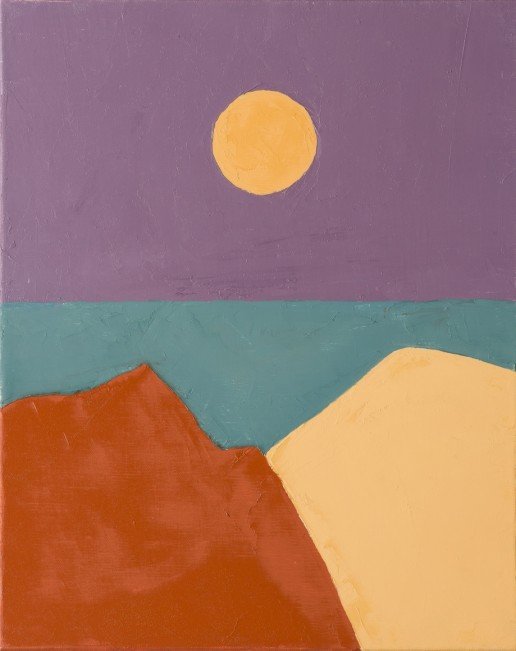
Etel Adnan, Untitled, 2015
She is a Lebanese-American poet, essayist, and visual artist. The academic journal MELUS: Multi-Ethnic Literature of the United States named Adnan as “arguably the most celebrated and accomplished Arab American author writing today” in NUM0. Since around 1950 she has been based in California, where she has worked for most of her adult life as an academic. In recent years, and relatively late in life she has gained worldwide acclaim for her paintings. Color and light are the two dynamics that inform Adnan’s ongoing series of landscape paintings of Mount Tamalpais (Marin County, California). Adnan has said that “light is everything for me,” and the sunlight expressed in her paintings and other works is often stylised and shown as the main compositional motif Adnan’s paintings, renowned like those of an outstanding colonist, present deceptively simple yet highly sophisticated essays in harmonious composition.
7. Harold Ancart
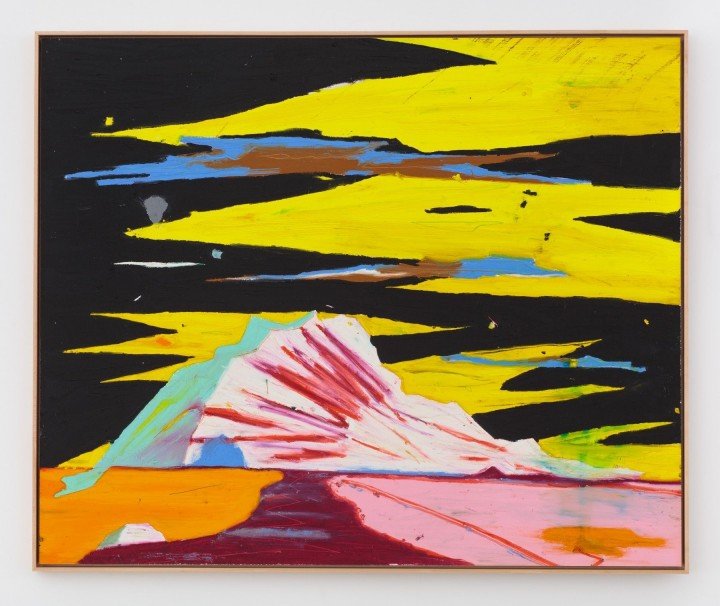
Harold Ancart, Untitled, 2016, lipstick and pencil on paper, mounted on board
The artist uses the subject matter as a pretext to apply paint to the canvas. Ancart creates radiant compositions that recall key moments in modernist painting, especially abstract expressionism and color field painting, extending their delicate minimalism into an exuberant vision. In his work he recognises a delirious longing for a kind of utopian place or Eden-like escape as a constant feature of our imaginations, and it is this fictitious domain he often seeks to represent. In his paintings he posits that the possibilities for transformative experience are not just somehow out in the world to strive for, but contained within the arena of painting.
8. April Gornik

April Gornik, Big Storm Light, 2016
A landscape artist who paints monumental canvases showing the majesty of the American landscape. Linked to the objectives of historical groups like the Hudson River School painters, Gornik also seeks to show the power of nature and the feelings of the sublime it evokes in the viewer.She heavily focuses on cloud formations in her works. Though not an environmental activist through her work specifically, she is a nature lover with deep spiritual beliefs. She has said that “If someone interprets my work as being a protest against our destructive behavior, or an attempt to get people to look outside themselves or see themselves as part of nature rather than having an anthropocentric view, I’m happy to have encouraged that”.
9. Ilse d’Hollander
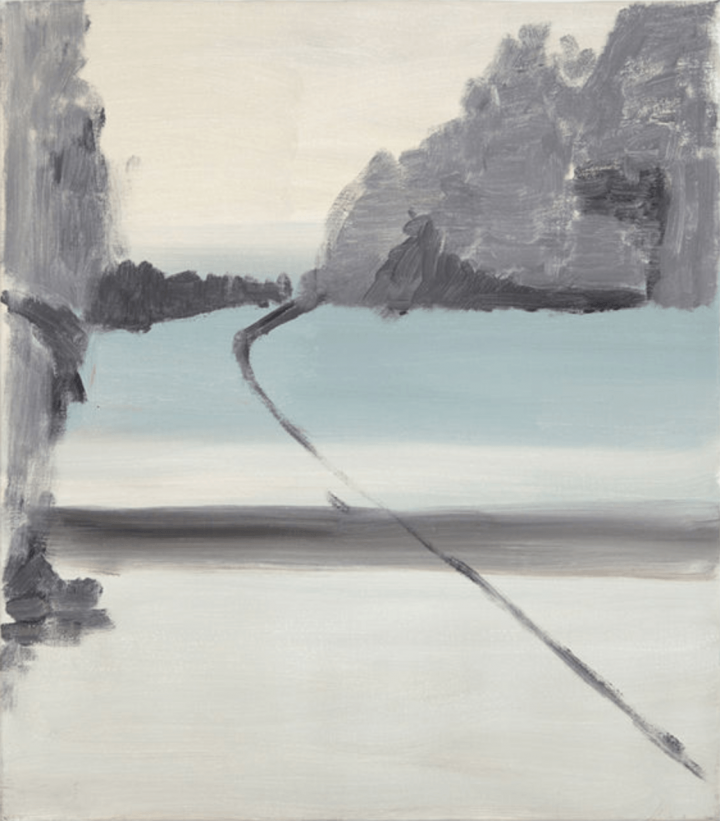
Ilse d’Hollander, Untitled, 1996
D’Hollander’s paintings are seldom immediately recognisable as straightforward or literal landscapes. The viewer is drawn in close, as much by the ambiguity of image as the intimate scale which also invites scrutiny. Monochrome or near monochrome fields might be interrupted by blocks of colour; geometric volumes softened by streaks of paint or scumbled marks – applied with a brush or sometimes the artist’s hands. The artist memorializes and records her thought processes through the making of her judiciously pared-back compositions, resulting in a series of accumulated impressions, adjustments, and layerings.
10. Lucas Arruda

Lucas Arruda, Untitled (deserto-modelo), 2015
Perceived as landscapes, his evocative paintings are more a product of a state of mind than depictions of particular locales. As he has noted, “The only reason to call my works landscapes is cultural—it’s simply that viewers automatically register my format as a landscape, although none of the images can be traced to a geographic location. It’s the idea of landscape as a structure, rather than a real place. Verging on abstraction, the compositions are grounded by an ever-present, if sometimes faintly perceptible, horizon line that offers a sense of distance and the implication of perspectival or atmospheric space. Intimately sized, they appear at once familiar and imaginary. Through his lightly textured brushstrokes, Arruda brings the materiality and physicality of his paint to the fore, while also recalling the genres’ historical associations with the romantic sublime.
